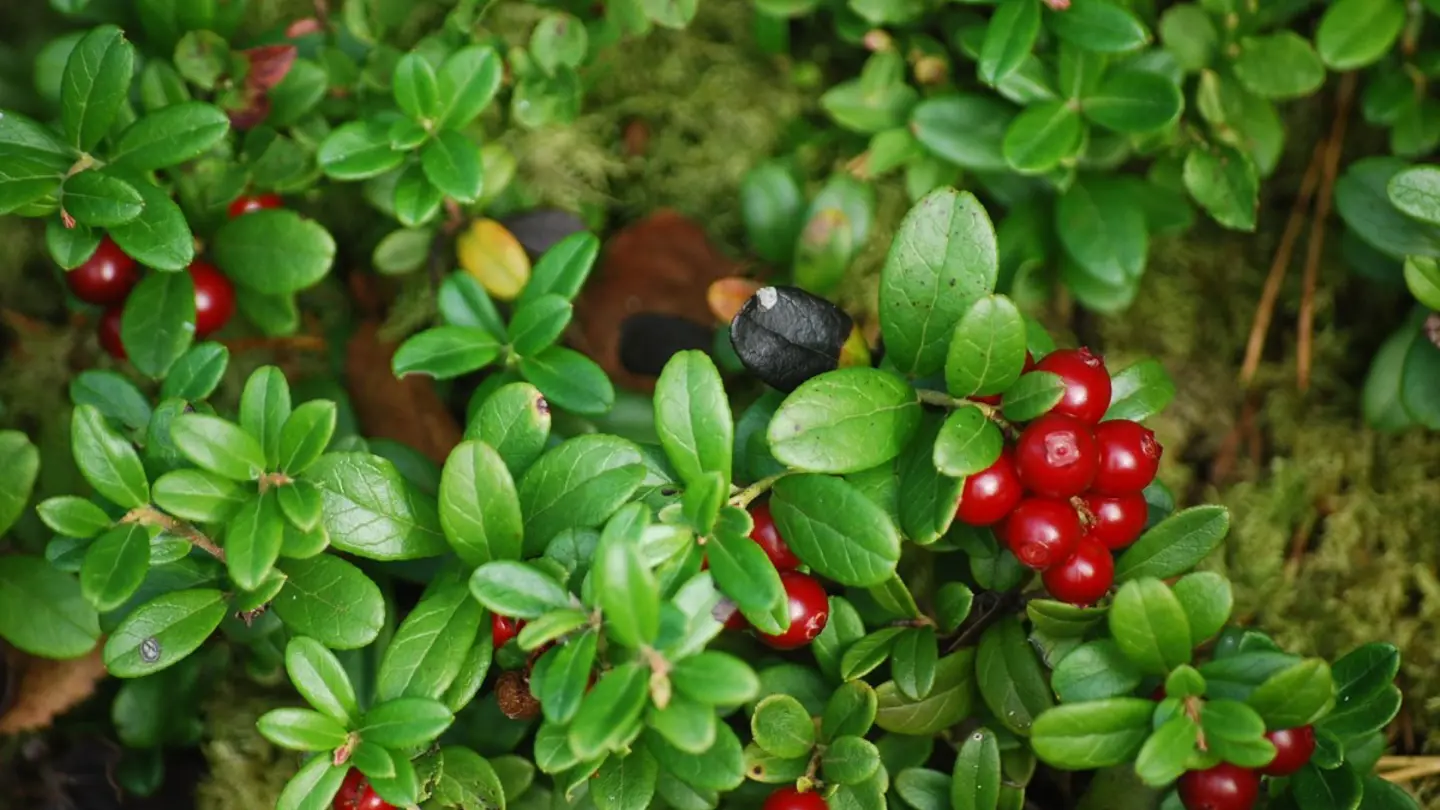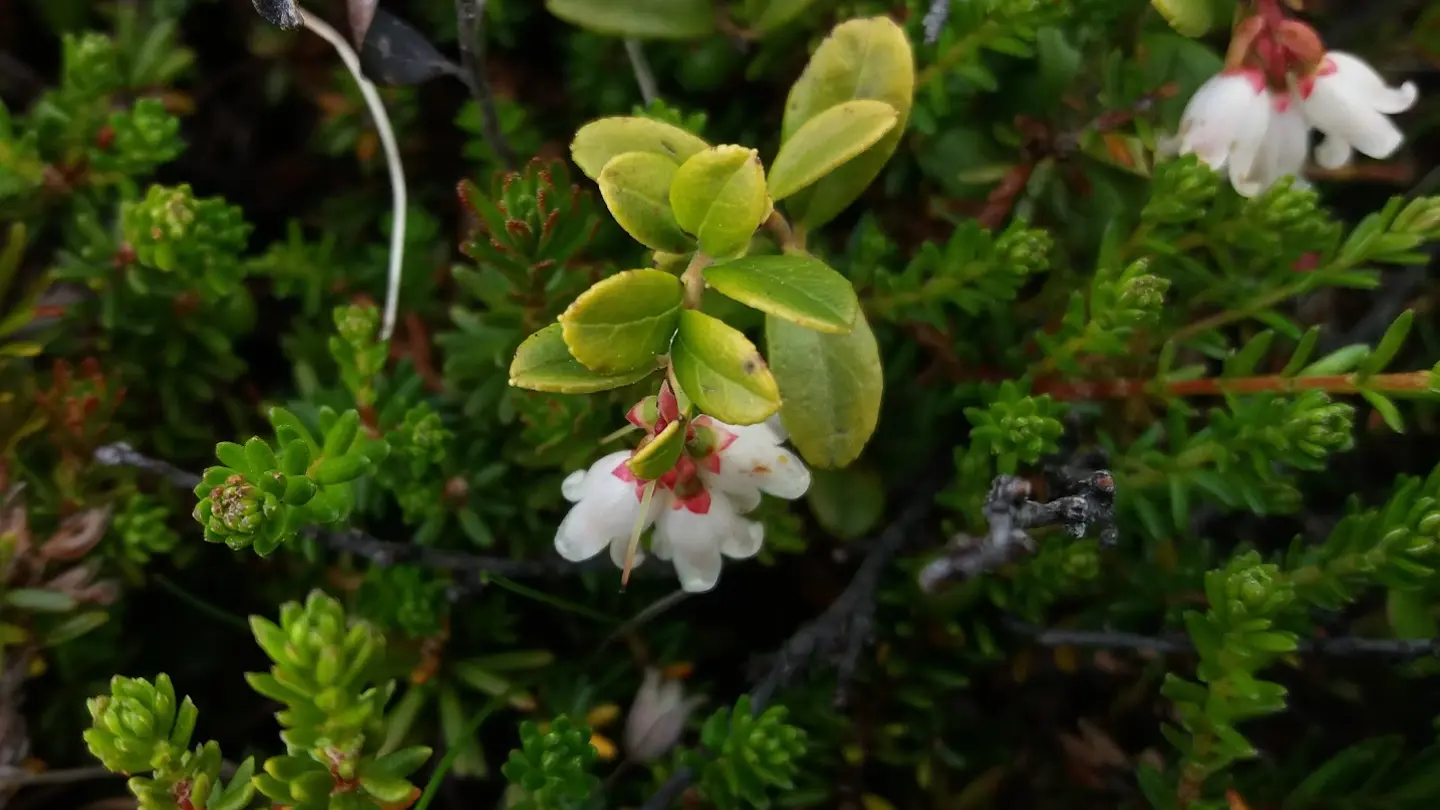
Lingonberry (Vaccinium vitis-idaea)
- Hem
- Projekt
- Vilda kulturväxtsläktingar
- Växtporträtt
- Lingonberry (Vaccinium vitis-idaea)
The lingonberry is found across most of the Nordic region and has a circumpolar distribution across Europe, Asia and North America. It occurs in the boreal forest and Arctic tundra of the Northern Hemisphere and is most common under a forest canopy on dry, acidic and low nutrient soils. It survives very low winter temperatures (at least -40ºC) but is not well adapted to hot summers.
Text by Anna Palmé.
Vaccinium vitis-idaea has many different names. In English the most common ones are lingonberry and cowberry and in the Nordic countries it is called lingon in Swedish, puolukka in Finnish, tyttebær in Norwegian and Danish, rauðberjalyng in Icelandic, but there are also some alternative names used locally. Previously the American lingonberry was often treated as a separate subspecies or variety but today this subdivision is not generally recognized by taxonomists, and the lingonberry is regarded as one species across its large distribution area.
Improved conservation
Traditionally the lingonberry has been used extensively by the people living in the regions where it is found, both in America and Eurasia. The berries have been popular not only because of their delicious sweet, sour and at the same time bitter taste but also because of their high level of benzoic acid, which is a natural compound that conserves products made with lingonberries. Before sugar became a cheap commodity, lingonberries was added to other berry preserves to improve conservation. In Sweden lingonberries were often conserved as “vattlingon” (water lingonberries) simply by covering the berries with water in a clean bottle or jar.

Today lingonberries are generally eaten and preserved with sugar. It is a popular berry for making jams and contains pectin, which thickens the jam. In Sweden it is often used as a condiment to food and lingonberry jam is traditionally served with meatballs, game, blood pudding, “kroppkakor” and “palt”. There is also a tradition to use it in desserts, for example in vispipuuro (Finnish)/klappgröt (Swedish) which is a whipped semolina porridge, and also for lingonberry juice/beverages. Today it is extensively used in the modern Nordic kitchen, both in desserts and as a condiment to the main course.
Many healthy compounds
Lingonberries contain many healthy compounds, such as antioxidants, vitamins, and minerals. The vitamin C content might not be as high as is sometimes claimed, but studies suggest that lingonberries contain high levels of antioxidants compared to other berries and that it can limit the negative effects of eating high-fat food. The berries also contain tannins, which can have an effect on urinary tract disorders, and like cranberries, lingonberries have traditionally been used to treat such disorders. Lingonberries have in fact been used for a wide range of disorders in traditional medicine, for example as an antiseptic and to treat scurvy.
Lingonberries have traditionally been collected from the wild and this is still mainly the case today. There are some cultivars produced, including the four Swedish varieties Sanna, Sussi, Ida, and Linnea but there is no large-scale cultivation.

During the winter months, and especially during Advent and Christmas, lingonberries have been used as decoration. It is an evergreen shrub, so its beautiful shiny dark green leaves survive all winter when most other plants lose their leaves. It can be used in many ways to add colour and greenery both outdoors and indoors, but most common is perhaps to make wreaths.
Referenser
Dinstel RR, Cascio J, Koukel S (2013) The antioxidant level of Alaska’s wild berries: high, higher and highest. Int J Circumpolar Health 72: 21188, http://dx.doi:10.3402/ijch.v72i0.21188
GRIN taxonomy, https://npgsweb.ars-grin.gov/gringlobal/taxon/taxonomysearch.aspx
Heidenreich C (2010) THE LOWDOWN ON LINGONBERRIES. New York Berry News Vol. 9(6)
Heyman-Lindén L, Kotowska D, Sand E, et al. (2016) Lingonberries alter the gut microbiota and prevent low-grade inflammation in high-fat diet fed mice. Food & Nutrition Research, 60:10.3402/fnr.v60.29993. doi:10.3402/fnr.v60.29993.
ITIS (Integrated Taxonomic Information System), https://www.itis.gov/
Virtuella Floran
Öhrvik V, Mattisson I, Staffas A, Strandler HS (2011) Bär – analys av näringsämnen. Livsmedelsverkets Rapport 12, https://www.livsmedelsverket.se/globalassets/publikationsdatabas/rapporter/2011/2011_livsmedelsverket_12_vitaminer_bar.pdf


